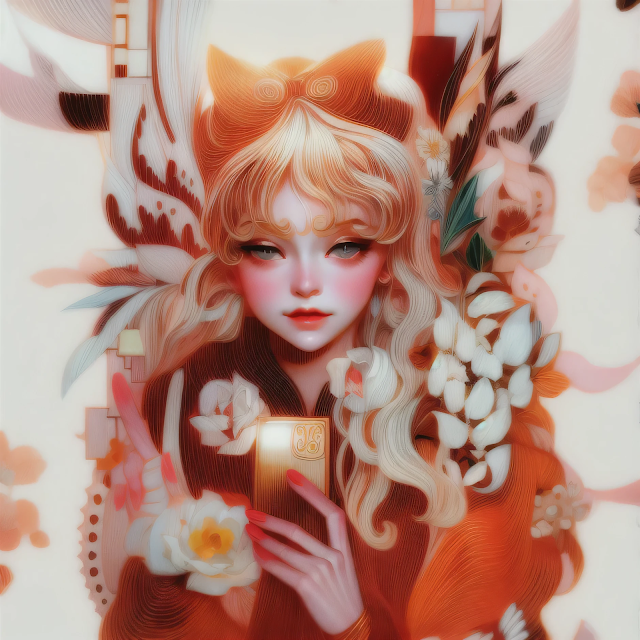The Disruption of Duality: AI and the Redefinition of Artistic Praxis
The Disruption of Duality: AI and the Redefinition of Artistic Praxis
เราชนะประกวดระดับเอเชียด้วยการวาดมือมา 3 ปีนะ รวมปีที่ผ่านมาซึ่งได้รองชนะเลิศ 2 ปีและ winning work 1 ปี
นักวาดที่เคยชนะระดับเอเชียมาใช้ AI คือมันต้องมีเหตุผลที่เราต้องใช้ AI ดิคนน่ะไม่คิดเรื่องนี้เหรอเราไม่เข้าใจว่าทำไมคนถึงคิดไม่ได้
ว่า AI มันถูกเทรนมามันไม่ได้มีมือมันเลยหยิบรูปขึ้นมาดูเองไม่ได้มันต้องมีคนป้อนข้อมูลเข้าไปซึ่งข้อมูลที่ถูกป้อนเข้าไปคือไลอ้อน 5 นั่นก็คือข้อมูลทั้งอินเตอร์เน็ตไม่มีใครเขามานั่งเลือกหรอกว่าภาพนี้กูเอาภาพนี้กูไม่เอามันเอาข้อมูลทั้งอินเตอร์เน็ตและคนที่อัพโหลดขึ้นไปคือใคร?
ก็คือพวกคุณนั่นแหละที่ consent ให้คนดูรูป AI มันไม่ได้ก๊อปรูปคุณตรงๆมันไม่ได้ผิดกฎหมายตรงๆทั้งๆที่มันเป็นแฟร์ use แล้วในหลายๆประเทศรวมถึงญี่ปุ่นในตอนนี้ก็ยอมรับให้สามารถเทรน AI ได้แล้วในระดับประเทศ
AI มันก็ดูรูปได้เหมือนกันการเทรนมันคือการดูรูปนั่นแหละไม่ต่างอะไรกับการที่พวกคุณดูรูปของ artist อื่นๆเสพรูปอาร์ทติสอื่นๆเสร็จแล้วเอา inspiration มาวาดต่อแค่ทำในระดับสมการทางคณิตศาสตร์เท่านั้นเองที่พวกคุณกำลังโมโหเพราะว่ามันกำลังทำได้ดีกว่ามนุษย์ไปแล้ว
แล้วถ้าถามว่าทำไมถึงบอกว่ามันคือการวาดต่อไม่ใช่การขโมยเราไม่ได้ดูที่อะไรเราดูที่ผลลัพธ์โอเคถ้าหากว่าบอกว่ามันวาดมันก๊อปมาโชว์หลักฐานมาเลยวงมาเลยว่าตรงไหนก็อปตรงไหนที่มันเหมือนตรงไหนที่มันก๊อปมาไม่ใช่เอาแค่เฉียดๆขอแบบตรงๆแบบตรงๆแบบที่จับได้เลยไม่ใช่เอาแบบที่เฉียดๆมาให้ดูแล้วบอกว่านี่คือการก๊อป
ไม่งั้นมันก็เหมือนกับที่พวกคุณใช้งานศิลปินท่านอื่นเป็นแรงบันดาลใจใช้งานศิลปินท่านอื่นเป็นการฝึกฝนนั่นแหละ
มันดูที่ผลลัพธ์ไม่ใช่ดูที่สมการไม่ได้ดูที่อะไรทั้งนั้นไม่ได้ดูที่ขั้นตอนไม่ได้ดูที่อะไรทุกอย่างดูที่ผลลัพธ์ว่ามันเหมือนกันหรือเปล่าว่ามันคล้ายกันแค่ไหนและกระบวนการของมันเป็นยังไงที่พวกคุณกำลังเดือดกำลังรู้สึกแย่อยู่ตอนนี้เพราะ AI มันกำลังทำได้ดีกว่ามนุษย์ไปแล้วในระดับที่เป็นสกิลและฝีมือไม่นับเรื่อง concept และอื่นๆทำไมไม่มองว่าตัวเองจะต้องพัฒนาตัวเองเรื่องการใส่ concept ใส่เนื้อเรื่องให้ภาพมากขึ้นและทำให้ภาพมีมิติมากขึ้นแทนที่จะไปด่าและไปต่อต้านมันที่มีขึ้นมาแล้ว
เราจะอธิบายให้ทุกคนฟังนิดนึงว่าพอเราจบสถาปัตยกรรมศาสตร์มาวิธีในการทำงานศิลปะของเราและมุมมองในการทำศิลปะของเรามันจะแตกต่างจากคนอื่นหรือกลุ่มอื่นๆที่ไม่ได้จบจากสถาปัตยกรรมศาสตร์เนื่องจาก.....
การเรียนเพื่อเป็นสถาปนิกเราไม่ได้เรียนเพื่อเป็นดราฟแมนเราคือดีไซเนอร์หมายความว่าถ้าหากเป็นภาพวาดแล้วเราคิดว่าโครงหรือตัวภาพหรือ concept ของภาพลายเส้นของภาพคือสิ่งที่สำคัญที่สุด หมายถึงแนวคิดที่เราอยากจะสื่อลงไปในภาพว่าเราอยากจะเล่าอะไรเราอยากจะสื่อสารอะไรในรูปสิ่งนี้นั่นแหละที่จะทำให้คุณคือ artist จริงๆคือศิลปินที่แตกต่างจาก AI จากการที่วาดภาพโดยไม่มีจิตตั้งต้นใดๆในการวาดภาพคนที่อยู่หลังคอมพิวเตอร์คือคนที่ใส่คำสั่งให้ AI คือคนที่จะใช้ชีวิตของตัวเองและประสบการณ์ชีวิตของตัวเองสร้างชีวิตให้กับภาพ
ดังนั้นสิ่งที่เป็น matter จริงๆสำหรับการเป็นศิลปินหรือศิลปะมันคือการสื่อสารการสื่อสารคือสิ่งที่ศิลปะให้จริงๆกับภาพนั้นๆแล้วถ้ามันเป็นการสื่อสารจำเป็นไหมที่เราต้องวาดบอกเลยว่าวาดเป็นแค่ medium หรือเป็นแค่อุปกรณ์ถ้าเรายึดติดแค่การวาดเราก็จะอยู่ที่แค่การวาดเท่านั้น
As an artist with a three-year consecutive winning streak at the Asian-level drawing competitions (including two runner-up placements and one winning work), I find the integration of artificial intelligence (AI) into the artistic realm a compelling subject for critical discourse. The debate surrounding the utilization of AI by established Asian artists necessitates a nuanced analysis.
It's paramount to acknowledge that AI, despite being trained on voluminous datasets, lacks the inherent capacity for independent image selection and analysis. The data ingested by AI systems – often referred to as "lion 5" – constitutes the entirety of accessible internet information. This data isn't curated by human intervention; instead, it represents the totality of uploaded content, including user-shared images.
The incorporation of AI in art ignites discussions regarding copyright infringement and fair use principles. However, it's crucial to recognize the distinction between direct copying and the generation of novel creations based on the assimilated patterns and techniques gleaned from the training data. This process bears a resemblance to the way human artists draw inspiration from existing works, absorbing and internalizing visual information to inform their artistic expression. The key divergence lies in the computational nature of AI's learning process.
The current discourse surrounding AI in art is often driven by the apprehension that AI-generated works may surpass human-crafted pieces in terms of technical proficiency and skill. However, it's essential to acknowledge that the essence of art transcends the final product, encompassing the underlying concept, narrative, and dimensionality that the artist imparts to the work. As an architect, I have been instilled with the philosophy that the structure, form, and thematic intent are the cornerstones of artistic value.
Architectural education emphasizes the role of the designer, differentiating us from mere draftsmen. We prioritize the conceptual framework, the message we intend to convey, and the communication we aim to establish through our creations. This is precisely what differentiates human artists from AI: the ability to imbue our life experiences and intentions into the art we produce.
The crux of artistic expression resides in communication. Art serves as a conduit for expressing our thoughts, emotions, and perspectives. If we become solely fixated on the technical aspects of drawing, we risk constricting our artistic potential and growth. Instead, we must embrace the power of communication and acknowledge that drawing is merely one tool within our artistic arsenal.
In conclusion, while the emergence of AI in art presents challenges and ignites important questions, it's essential to approach this development with an open and inquisitive mind. Rather than succumbing to resistance or fixating on perceived threats posed by AI, we must evolve and adapt as artists. By prioritizing conceptual depth, narrative exploration, and the unique perspectives we bring to our work, we can continue to create art that resonates with audiences and stands apart from AI-generated pieces. The true value of art doesn't reside in technical mastery but in the human experience and communication it embodies.




Comments
Post a Comment